Tom Roberts’ bargain masterpiece now our great art treasure
A century ago artist Tom Roberts was impoverished and disillusioned, unable to sell Bailed Up, even after dropping the price from £275 to 70 by 1900.
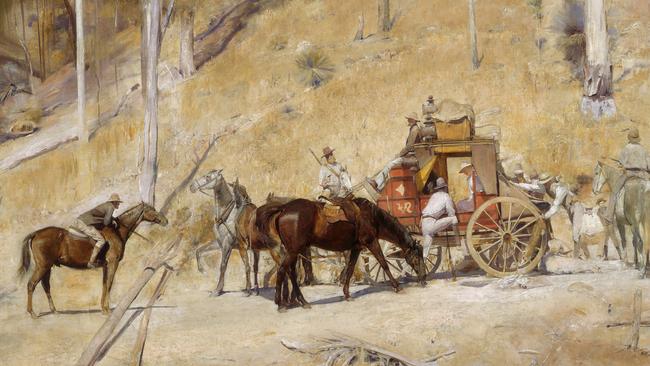
Today in History
Don't miss out on the headlines from Today in History. Followed categories will be added to My News.
The parched heat of midsummer weighs heavy on horses and riders in Tom Roberts’ landscape masterpiece Bailed Up, just as lanolin permeates the shed in Shearing The Rams. But a century ago Roberts was impoverished and disillusioned, unable to sell Bailed Up, painted in northern NSW in 1895, even after dropping the price from £275 to £70 by 1900.
And Melbourne critics dismissed Shearing The Rams, completed in 1890 after watching shearing at Brocklesby station near Corowa, as unworthy for acquisition by the National Gallery.
The founder of Australian impressionist art was an acquired taste for his contemporaries, often compared unfavourably against his Heidelberg companions Frederick McCubbin and Arthur Streeton.
Now acclaimed for depictions of a vanishing way of life under the true colours of Australian light, a summer exhibition at the National Gallery from Friday displays more than 130 of Roberts’ works.
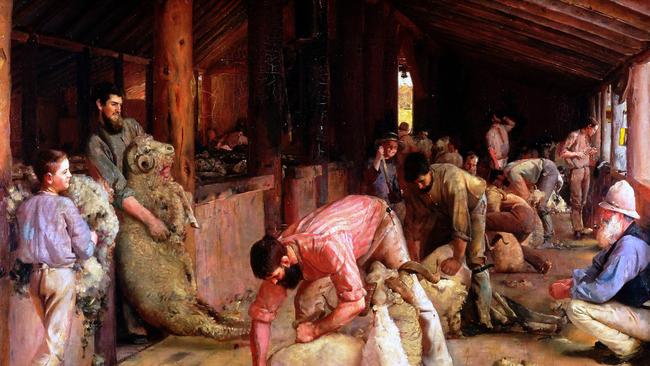
“Not everyone in the Melbourne art establishment … responded positively to this new fresh, naturalistic, plein-air style which Roberts and his mates introduced,” gallery director Gerard Vaughan explains.
Born on March 9, 1856, in Dorset, England, to newspaper editor Richard Roberts and wife Matilda, Roberts was educated at Dorchester Grammar School. After Richard’s death, Matilda took her three children to join relatives in Melbourne in 1869.
Roberts began part-time art classes in 1871, studying with Louis Buvelot and Eugen von Guerard, who awarded him a prize for a landscape. In 1874 he took university anatomy classes while studying with McCubbin at the National Gallery School.
He returned to England in 1881, studying at the Royal Academy School and touring galleries in France, Spain and Venice. He admired work by Spanish Baroque master Diego Velazquez, French impressionist Claude Monet and American James Abbott McNeill Whistler.
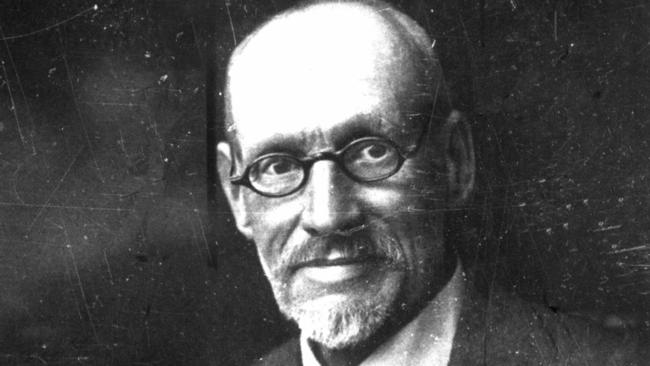
In 1885 Roberts returned to Melbourne and his former job in a photographic studio. On Sundays he led a band of artists to Heidelberg where he and McCubbin had set up their first artists’ camp near Box Hill, an idyllic spot Roberts discovered shortly after arriving in Melbourne.
As they pioneered Australian en plein air (open air) painting, Streeton, Walter Withers, E. Phillips Fox, Jane Sutherland, Tudor St George Tucker and J. Llewellyn Jones joined the art camps.
Roberts visited the Riverina for a wedding at Brocklesby in December 1886, and in summer 1887 began painting around the bayside outer suburbs of Beaumaris and Mentone, joined the next year by English-born Charles Conder.
Roberts helped design Australia’s first purpose-built artists’ studios and moved into a top floor studio at Grosvenor Chambers, Collins St, Melbourne in 1888. He used the studio to paint portraits on commission and completed landscapes.
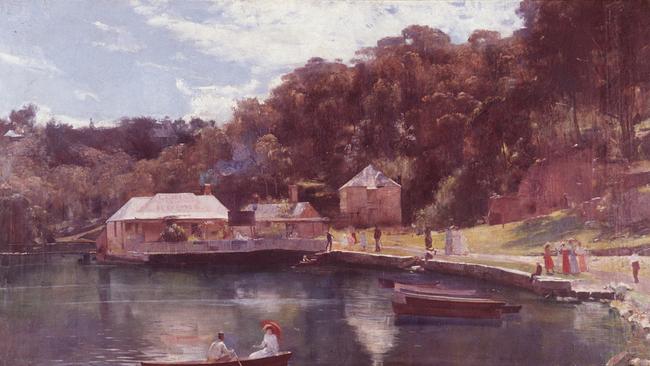
He was among seven Heidelberg artists, including Streeton, McCubbin and Condor, who in 1889 organised an exhibition remembered as the most important in Australian art history. Crowds flocked to see the 182 impressionist works.
With Melbourne in an economic depression, in 1891 Roberts and Streeton moved to Sydney, living and painting at Mosman’s Curlew Artists Camp, on a “little golden headland looking across the harbour’s indescribable blue”, as camper Bert Levy recalled in 1900.
Roberts befriended Bulletin founder Jules Archibald, whom he had met in 1885, and Andrew “’Banjo” Paterson. Through the Dawn to Dusk Club, founded by Bulletin sub-editor Fred Broomfield for artists “in love with the joy of living”, he met lawyer and future premier William Holman and “Harry Lawson, short-storyist and versifier”.
A visit to an Inverell sheep station in the summer of 1893 produced another three signature works, including The Golden Fleece — Shearing At Newstead Station, and Bailed Up.
From his viewing platform in a tree, Roberts used station owner Duncan Anderson as his model for bushranger Thunderbolt in Bailed Up.
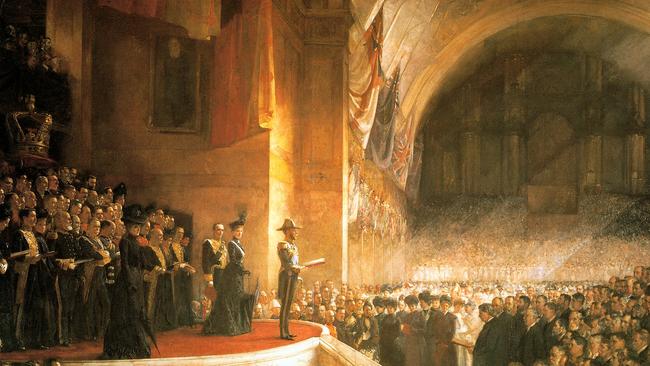
Roberts married Lillie Williamson and settled at Balmain in 1898. When he attended the opening of the first federal Parliament in Melbourne on May 9, 1901 he made unofficial sketches, as English migrant James Clarke Waite, known for a traditional portrait style, held the official commission. Roberts took over when Waite couldn’t continue, hoping commissions from royalty and political leaders depicted among the 269 guests in his Big Picture would ensure financial stability. He worked from Melbourne, then moved to London in 1903 to complete the work, earning 2000 guineas.
Roberts enlisted as an orderly in World War I, returning to Australia in December 1919. He reworked Bailed Up in 1927 and died in Melbourne in 1931.
Originally published as Tom Roberts’ bargain masterpiece now our great art treasure


